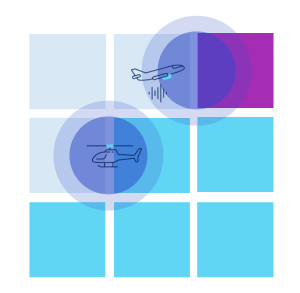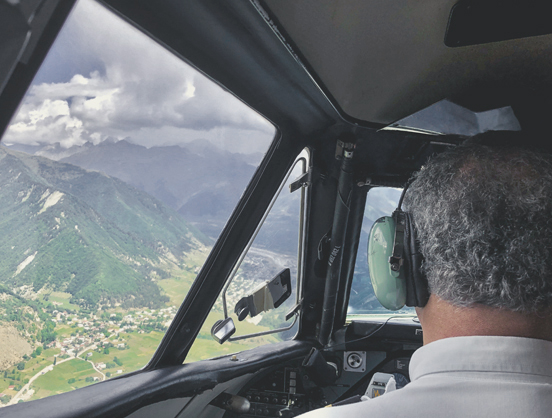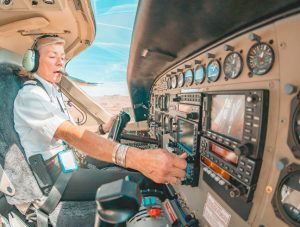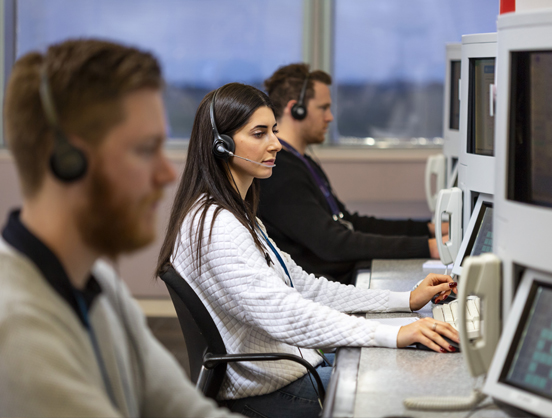
Navigating the skies safely
Airspace infringement
An airspace infringement (AI) is the unauthorised entry of an aircraft into airspace where a clearance is required, or to which entry is prohibited. Equip yourself for a safer flight by understanding the potential risks AIs can cause.
Potential risks of AI include:
- mid-air collision
- loss of separation
- increased workload for ATC and pilots.
Operating around controlled and restricted airspace
Operating around controlled and restricted airspace is subject to complex procedures that can be overwhelming for pilots unfamiliar with operating in these airspaces. As Australian airspace becomes busier and more complex, Airservices Australia are working to support you and other airspace users to operate more safely. Equip yourself for a safer flight by learning more about the airspace you are flying through and near how air traffic controllers can support you in this space.
Airspace infringement
AIs are an ongoing safety concern in Australia and abroad. There are multiple infringements in Australia every month that can put people and aircraft at risk. In an AI, there is the potential for your aircraft to operate in unsafe proximity to other aircraft or military activity. An AI may also increase air traffic control (ATC) and pilot workload and result in delays to other aircraft.
For further insights, visit the
AIs are a strong area of focus for Airservices teams. From controllers to data analysts, we monitor the frequency of AIs in different areas, as well as possible contributing factors.
AIs can occur due to contribution of several factors including airspace design, pilot behaviour and human factors.
For further information on operating at around controlled airspace safely and preventing an airspace infringement, read
or watch the following webinar we recently participated in:

Airspace infringement hot spots
Generally, airspace infringements do not occur at random locations. They frequently occur in the same areas, and these are known as ‘hot spots’.
Sometimes these ‘hot spots’ are critical locations, where an airspace infringement can interfere with the processing of traffic in controlled airspace.
Below are links to diagrams that show the location of the airspace infringement ‘hot spots’ in the major basins. These hot spot diagrams also provide advice on what you can do to avoid having an airspace infringement in these locations.
- Adelaide Basin airspace infringement hot spots
- Brisbane Basin airspace infringement hot spots
- Melbourne Basin airspace infringement hot spots
- Perth Basin airspace infringement hot spots
- Sydney Basin airspace infringement hot spots
For hot spots in other areas, please access CASA's stay on track series.
The information in these documents has been informed by data provided and analysed by a variety of Airservices team members including those involved in data gathering and analysis and controllers based at each location.
The Department of Defence has provided the following diagrams showing the location of airspace infringement hot spots and tips on avoiding them.
- Amberley airspace infringement hot spots
- Darwin airspace infringement hot spots
- Edinburgh airspace infringement hot spots
- East Sale airspace infringement hot spots
- Nowra airspace infringement hot spots
- Pearce airspace infringement hot spots
- Townsville airspace infringement hot spots
- Williamtown airspace infringement hot spots
Airspace infringement interactive maps
Airservices analyses airspace infringements through multiple systems. In doing so, our teams can use comprehensive, data-driven information to help improve the safety outcomes of our operations. Some of this data is now available for you to view in a series of interactive maps.
Pilot responsibility
Pre-flight preparation
Thorough pre-flight preparation is a good way to ensure safe airspace operations.
By solving potential problems before you start your journey, you reduce the likelihood of creating an airspace infringement through your own actions and increase your capacity to respond to factors outside your control.

Checklist to help prevent airspace infringements
During your flight
Navigation
Always accurately know your position relative to the controlled airspace (CTA) steps. Verify your position and the status of restricted areas in your vicinity if you arrive well ahead of, or after your anticipated time of arrival at a waypoint.
If in doubt, ask for navigation assistance from ATC (if you’ve got a flight notification submitted, this will be a lot quicker and easier for ATC to process your request).
It is better to have ensured you have passed a CTA step by a couple of miles before commencing climb than hugging the CTA steps and causing uncertainty to the controllers monitoring that airspace. Similarly, make sure you set up and fly your descent profile to arrive underneath any CTA steps well before the step boundary.

Transponder
Ensure your transponder is serviceable before you fly.
Always set your transponder to ON/ALT (Mode C). If a specific SQUAWK code has not been given to you by ATC, use the assigned temporary discrete code for that flight sector. If no temporary discrete code is assigned, follow the details listed in AIP ENR 1.6 – 8.
Operating your transponder will make your aircraft and altitude visible to ATC, allow air traffic controllers to receive conflict alerts involving your aircraft, and allow larger aircraft to receive Airborne Collision Avoidance System (ACAS) advisories. Additional guidance on transponder codes and requirements is available in AIP ENR 1.6, 7.
Make sure you know how to operate the IDENT (sometimes SPI) function of your transponder. However, do not operate it unless directed to do so by ATC.
Global Navigation Satellite System (GNSS)
GNSS can only be used as the primary means of navigation if the system installed has been approved by CASA and you operate the system in compliance with this approval. If you don’t meet these requirements, your GNSS can only be a secondary navigation reference.
Be aware that CTA steps may be based on various references including the aerodrome distance measuring equipment (DME), the aerodrome reference point (ARP) or runway threshold. On the visual terminal chart (VTC), the steps will refer to the datum used (for example, 30 DME, 7 NM ARP, 8 NM FM THR RWY 01). If using GNSS to remain clear of CTA, ensure you are using the correct reference point.
Where surveillance (radar, wide area multilateration (WAM) or ADS-B) is available, controllers normally monitor aircraft as they approach CTA steps to anticipate potential airspace infringements. If you are flying toward a CTA step with the intention of turning to parallel the step at the last moment, this will cause concern to the controller as they may anticipate that you will continue on the same track. A better technique would be to start your turn well before the CTA step. Also, if the controller is aware of your intentions, through your communication or an active flight plan this will reduce some of their concern.
Radio use
Actively monitor the appropriate area radio frequency whenever possible and listen for transmissions that include your callsign, or that are directed to unidentified aircraft in your area. ATC may direct calls to you based upon your position, altitude or heading. Speak up if you think a transmission may have been directed to you.
For more information read on communication procedures and best practice, visit:

Working with Air Traffic Control
Working effectively with controllers can reduce the likelihood of an airspace infringement occurring or having more serious impacts.
Controllers are there to help you. It is much better to ask Air Traffic Control (ATC) for help than to have an airspace infringement.
‘Flight Following’ is an ongoing Surveillance Information Service (SIS) available to VFR flights in Class E or G airspace. This service is provided to improve situational awareness and assist pilots in avoiding collisions with other aircraft. It is available on request, but always subject to ATC workload.
Remember: ask ATC for help if you are in doubt about anything.

Requesting clearance
You should request a clearance at least five minutes before reaching the CTA step. Have an alternative plan and a suitable decision point if you do not receive clearance or are unable to call prior to the point at which you would enter controlled airspace.
Having a flight plan already submitted greatly increases the chances of getting a clearance, as taking flight details over the air is time consuming and increases controller workload.
For more information, visit working with ATC.

Sharing lessons learned
Airspace infringement survey
Airservices is committed to working with you to improve the safety in and around controlled and restricted airspace. Your input helps to complete the narrative around occurrences, allows us to share lessons learned and support a safer airspace.
Help us to support you
Tell us what worked and what can work better
Airservices is committed to working with you to improve the safety in and around controlled and restricted airspace. To support this work, we need feedback from you, the airspace users we aim to support, to provide useful, engaging material about airspace safety.
Your input helps to improve our program of activities and support you in the ways you want and need. Take our feedback survey or skip to the end and just tell us what you think.
Related links
- Pilot Safety Hub | CASA
- Airspace infringements | Skybrary
Further reading
- Using the same hymn sheet: safe flight in controlled airspace | Flight Safety Australia
- Avoiding airspace infringement | EASA
- Human factors for pilots – communication | CASA
- Why flight planning is critical | CASA
Videos & podcasts
- Understanding airspace infringements | Flight Safety Australia | Airservices Australia
- Airspace infringement: sudden & unexpected | Eurocontrol
- Why airspace infringements have the potential to impact all of us | NATS
- Airspace infringement series: a controllers story… | NATS
Safety publications
Equip yourself for a safer flight with information about the airspace or aerodromes you are operating through and near.
